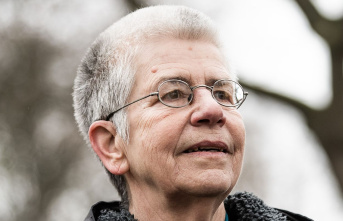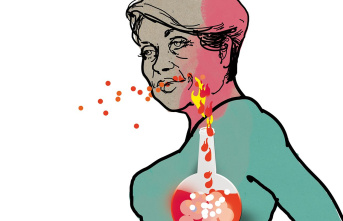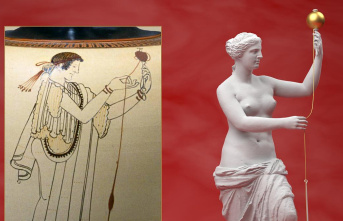When Concha Piquer sang "Look at my tattooed arm / With this woman's name", only people with unconventional lives dared to decorate their bodies. Sailors, like the protagonist of this song from 1941, soldiers, thugs, prisoners who had the names of their girlfriends or their mothers written on them, or the drawing of a heart as pierced by an arrow as their existences were. By the time the first Barbie tattoos appeared in 2011, these skin engravings had long since ceased to be an antisocial badge, and now one in two millennials wears them.
This is the path in the West, but tattooing is a global art or craft, which has been practiced in all societies since ancient times, as the exhibition that now arrives in Barcelona makes clear and uses a statement by Charles Darwin : “we cannot mention a single large country between the polar regions, in the north, and New Zealand, in the south, where the indigenous people do not get tattoos”. In Europe we had stopped considering ourselves indigenous for many centuries, but this practice continued to exist, it had done so among Celts, Germans or Picts, as we discovered with the ice man, Ötzi, the 5,300-year-old mummy discovered in the Alps and which housed 61 tattoos on his body, with a function that is now believed to be therapeutic. What led and still leads humans to mark their skins?
Contrary to popular belief, tattoos depend more on social structures than on the passage of time, explains historian Luc Renaut in one of the texts in the (unmissable) catalogue. This practice developed in the Middle East, lower Nubia or the Balkans, mainly among women, for attributing magical or beneficial properties to them, also to mark slaves. Serving as a property mark, not as an ornament, was one of the functions of tattoos in ancient times, just like those made for therapeutic purposes. And there were also to distinguish elites, such as the nomadic tribes of central Asia.
Because depending on the geographical locations, the drawing of the skin adopts different characteristics in the West, the Americas, Polynesia, the Middle East and the Far East. In the West this practice was prohibited by the Church; its return came from the hand of the expeditions: the explorer James Cook brought the word tattoo from the South Seas in the 18th century, from the Polynesian expression tatau, which means to hit. Soon the sailors appropriated these tattoos, the indigenous designs gradually replaced by other Western figurative ones, the bodies turned into a travel diary in which the stops and military campaigns were inscribed.
In the United States, where the skin design of the natives was known, it was being assumed throughout the 19th century, after some principles in which it was reserved for cabinets of curiosities or fair shows, and in 1891 Samuel O'Reilly He invented the first electric tattoo machine. From there it became normalized in Great Britain, where the Victorian Lady Randolph Churchill, mother of the statesman, had a snake tattooed on her wrist; Tsar Nicholas II also had a black dragon tattooed on his arm, even Archduke Franz Ferdinand had a snake tattooed on his hip. In southern Europe, the tattoo went from sailors to being considered typical of prisoners and criminals, as in France, where it spread among the legionnaires of North Africa, from where it went to prisons.
The engraving on the skin has been associated in many cultures with the dark side of society. In ancient Japan, tattoos served as an ornament and mark of belonging to a group, to disappear as such and reappear in the Edo period among men who worked half-naked, such as bricklayers, firemen and messengers, to disappear again when at the end of this period were reserved for criminals, who were tattooed on their faces and arms as part of their sentence. Marks on the skin have been banned and reintroduced in different periods of Japanese history, which despite this has varied and recognized styles and practices, although in the country it is still associated with the yakuzas: in many works it is not They accept tattooed candidates.
Another of the richest tattoo traditions is in Polynesia. In the Marquesas Islands, patu tiki was practiced until the 19th century, a social institution to which adults had to submit. With the French takeover of the archipelago, and the obligatory nature of Catholicism, patu tiki was prohibited. The damage caused by acculturation has been maintained until recent times, when the tattoo has been recovered as a form of resistance and identity against the colonialism shared by other peoples.
In New Zealand, Ta moko is inseparable from Maori culture. Submitted to the same process of acculturation as other Pacific cultures, they managed to survive, although a debate has opened up, the same one that exists in other cultures, about the appropriation that the West is making of these practices, while modifying them even in Its essence. For example, the traditional technique of Ta moko is slow and painful, so it has been replaced by a modern one. At the same time, the globalization of this art collides head-on with its purpose, which is belonging to and respecting the principles of the Maori tradition.
John Miller, Professor at the University of Sheffield and editor of the collection Tattoo Tales. An anthology of ink (1882-1952), published by Alba, provides a good reflection: “the idea that the tattoo can be a profound and real thing in a culture overwhelmed by the illusory makes it an ideal consumer object. Everyone wants to be unique. Therefore, the 21st century tattoo is a true paradox and has become fashionable because it is alternative”.
Tattoo. art under the skin
CURATOR: Anne Richard. Caixaforum. Barcelona. From May 18 to August 28. Previously it could be seen at CAIXAFORUM Madrid and at the Musée Quai Branly in Paris.
4












